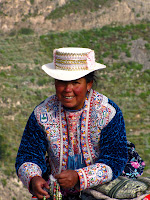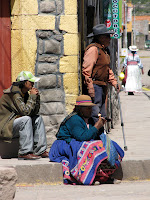I REALISED today, when Helmet was telling us about the teams of UNICEF staffers roaming hiking around the Colca Canyon to vaccinate the region’s youngest residents, that Peru is one of the poorest places I have ever been.
This is one of those countries where the United Nations and
charitable organisations like World Vision deposit big bucks just to give the
locals access to the things we take for granted in the developed world like
clean water and disease-free childhoods.
So, when we drove back into Arequipa this afternoon, after
our two-day adventure in the Andes behind Peru’s second-largest city, I paid
close attention to the communities on the outskirts of town and realised they
were the closest thing to a shanty town I had ever seen.
The people who live in these poor neighbourhoods build a
tall wall around a austere one or two-room dwelling, and when I took a close
look I realised the locals didn’t even have the money to buy concrete so simply
stacked the blocks and bricks one on top of each other to protect their small
patch of real estate.
Our guide told us that these neighbourhoods are hubs from immigrants
from the poorest parts of South America, people who flood across the porous
borders near Puno and Lake Titicaca and then head into Arequipa to find work
and the means to build a better life.
It made me wonder that if these decrepit neighbourhoods were an imporvemet on thier old life, what had these economic refugees left in their home countries?





















































